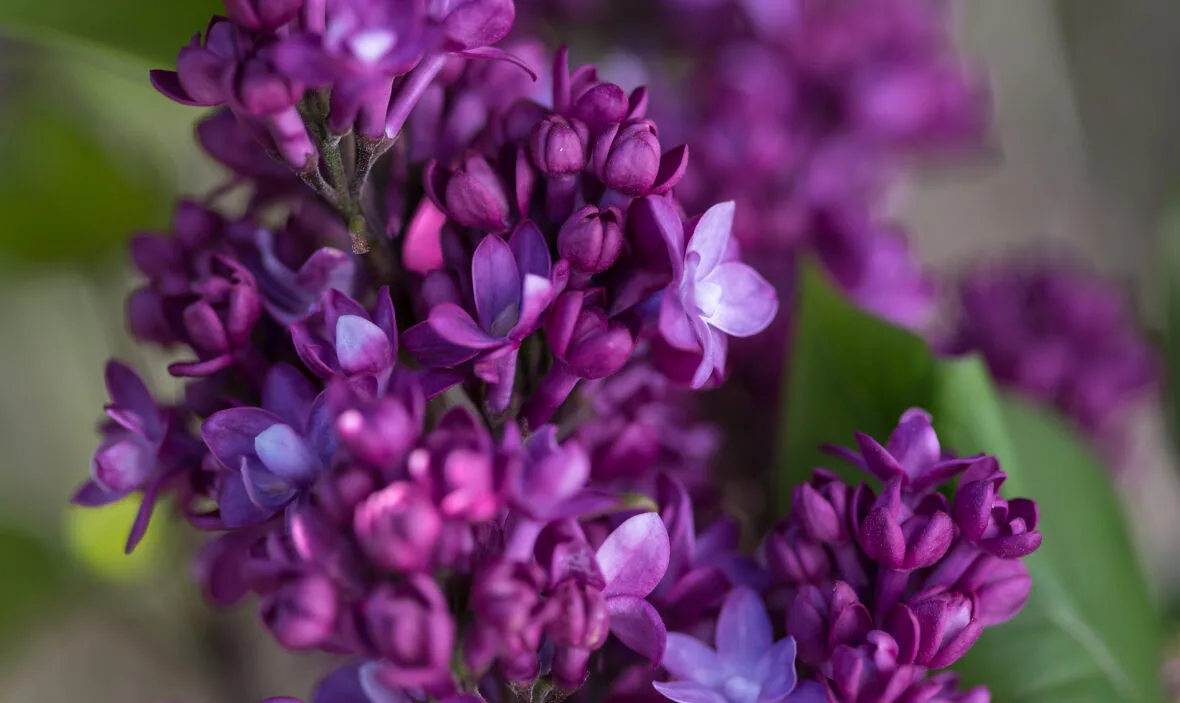
The Landscaper's
Choice
AVN succeeds by helping you & your business succeed.
6 Locations
Plant Experts
+100 years in the industry
+2000 Plants

Discover More Information On Virtual Violet® Lilac
With shiny violet-trimmed new leaves, deep purple stems, raspberry-purple buds, and fragrant violet flowers, Virtual Violet® Lilac is aptly named. The shape is upright instead of rounded and compact, and the dense habit makes it a great choice for a hedge in smaller spaces as well as foundation plantings. Remarkably mildew-free, this is a controlled cross between 'Charles Joly' and two outstanding National Arboretum varieties.
Plant Attributes
The Virtual Violet® Lilac is an attractive and distinctive plant, known for its vibrant and rich color palette which includes violet-trimmed new leaves, deep purple stems, raspberry-purple buds, and fragrant violet flowers. With such an array of purple shades, the plant lives up to its name.
The plant has an upright growth habit rather than the rounded, compact shape typically associated with some lilac varieties. This form, combined with its dense growth habit, makes it an excellent option for a hedge in more constrained spaces, as well as an appealing addition to foundation plantings.
One of the remarkable attributes of this lilac variety is its resistance to mildew, a common issue with many lilacs. This resilience is largely thanks to its lineage: it's a controlled cross between 'Charles Joly' and two other outstanding National Arboretum lilac varieties.
The Virtual Violet® Lilac is a medium-sized shrub, with a typical height ranging from 6 to 8 feet, and a spread of about 5 to 7 feet. It thrives in hardiness zones 3 through 7, and in heat zone 7. The plant prefers full sun exposure, which allows it to produce the most vibrant colors and abundant flowers.
The blossoms of the Virtual Violet® Lilac are a light purple, providing a nice contrast to the darker green of its foliage. Its flowers are not only visually pleasing but also fragrant, adding a sensory depth to its appeal. Its robust coloration, upright growth, and resilience make it a wonderful choice for many gardeners and landscape designers.
Landscape Use
The Virtual Violet® Lilac is a versatile plant that can be incorporated into landscaping designs in various ways.
- Hedge Planting: Given its upright and dense growth habit, it is an excellent choice for hedging. The stunning color display and the rich fragrance of its flowers make it an appealing natural barrier or boundary marker in a garden or yard.
- Foundation Planting: This lilac variety is also suitable for foundation plantings around homes or buildings, providing an appealing and vibrant contrast to structural materials.
- Specimen Planting: Its dramatic coloration and fragrant blossoms make it a standout specimen plant. As a focal point in a garden, it can add aesthetic appeal and sensory interest.
- Mixed Borders: The Virtual Violet® Lilac can also be used in mixed borders with other shrubs and perennials. Its unique color can provide a striking contrast to plants with lighter or variegated foliage.
- Wildlife Attraction: Lilacs are known to attract butterflies and other beneficial insects, providing a food source for local wildlife while also adding a lively dynamic to your garden space.
- Container Planting: For those with limited space, or who prefer a mobile option, these lilacs can also be grown in large containers. This allows for the option to strategically move the plant for optimal sun exposure or rearrange for varying aesthetic designs.
The Virtual Violet® Lilac thrives in full sun and well-draining soil. Regular pruning after its flowering season can keep the plant healthy and enhance its shape and flower production. Regular watering is important, especially in the first few years as the plant establishes its root system.
Planting & Care
Planting and caring for the Virtual Violet® Lilac involves several steps to ensure healthy growth and vibrant blooms.
Planting
- Location: Choose a location that provides full sun exposure, as lilacs thrive in sunlight. The more sun they receive, the more flowers they produce.
- Soil: Lilacs prefer well-draining soil. If your soil is heavy clay or sandy, amend it with organic matter such as compost or well-rotted manure. The ideal soil pH for lilacs is neutral to slightly alkaline (pH 6.5-7.5).
- Spacing: Space plants 5 to 7 feet apart to allow for mature growth and good air circulation. This also helps to reduce the risk of disease.
- Planting: Dig a hole twice as wide and just as deep as the root ball. Set the plant in the hole with the top of the root ball level with the soil surface. Backfill with the amended soil, firming gently to remove air pockets.
Care
- Watering: Water thoroughly after planting, and continue to water regularly during the first few years, especially during dry spells. However, avoid waterlogging the soil, as lilacs do not tolerate soggy conditions.
- Fertilizing: Apply a balanced granular or slow-release fertilizer in early spring before new growth begins. Avoid high-nitrogen fertilizers, which can encourage leafy growth at the expense of flowers.
- Pruning: After the lilac finishes blooming, usually in late spring or early summer, prune off the spent flower clusters to encourage more blooms the following year. This is also a good time to remove any dead, damaged, or crowded branches to maintain the plant's shape and health.
- Mildew Prevention: Even though Virtual Violet® Lilac is mildew-resistant, good air circulation and avoiding overhead watering can help prevent any possible disease.
- Mulching: Applying a layer of mulch around the base of the plant can help conserve moisture and suppress weeds.
Additional Information
Interested in
Virtual Violet® Lilac
?
Plant Features
- Height: 6-8'
- Width: 5-7'
- Hardiness Zone: 3-7
- Heat Zone: 7
- Exposure: Full Sun
- Habit: Upright
- Flower Color: Light Purple
- Foliage: Dark Green
Interested in a particular plant or have questions?
Please don't hesitate to contact us via this form or email, and we will reply as soon as possible.












